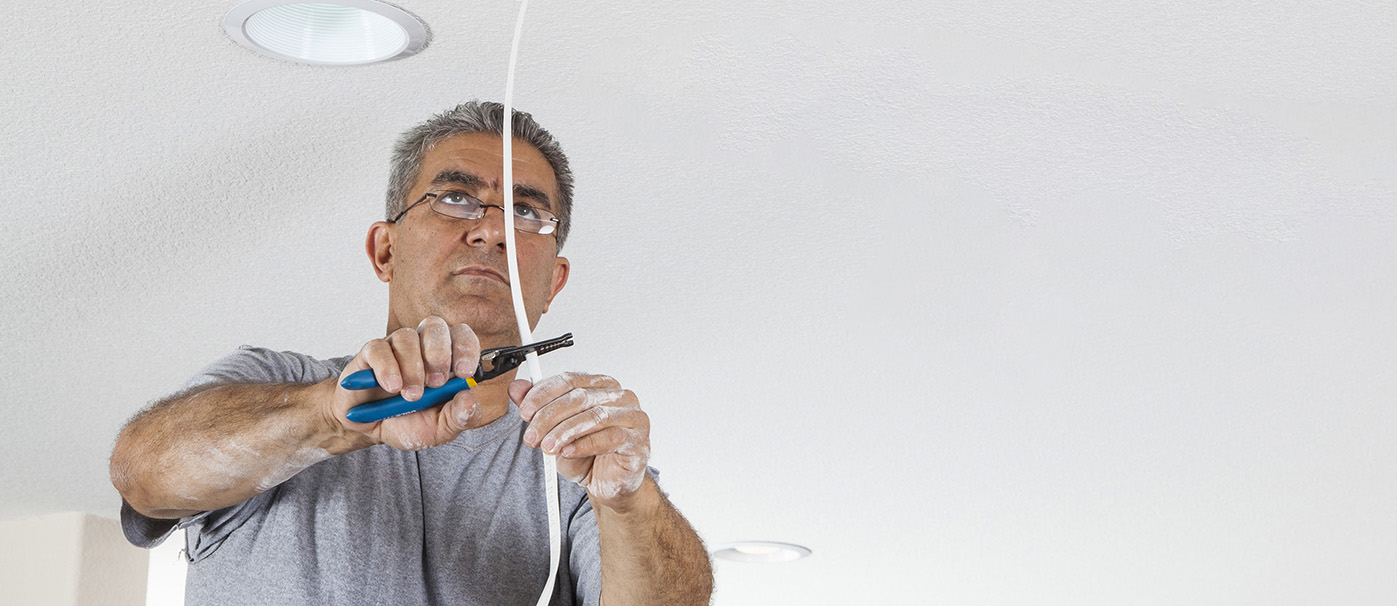Staying safe as a lone electrical worker
Lone workers are found everywhere. Whether they’re self-employed, contractors, or full-time employees, they take on an increased risk to fulfil difficult roles in almost every industry across the country. Bill Morrissey of Master Electricians Australia looks at the key considerations.
Globalisation and technological advancement have fuelled the emergence of a mobile workforce, with almost 70 per cent of Australians working remotely each week. According to a study by the International Workplace Group (IWG), almost 50 per cent of Australian employees work remotely for at least half of the week, while more than two-thirds work at least one day a week outside the office.
In Australia, working alone is defined as: “work by themselves and/or work in the community with only limited support arrangements, which therefore expose them to risk by being isolated from the usual backup support. This is the case whether they regularly work alone or are only occasionally alone and do not have access to immediate support from managers or other colleagues.”
Working alone, even in urban environments, poses challenges and potential dangers for employers and their workers.
The need for a business operator to manage hazards and risks posed to lone workers is covered under general WHS requirements in all states and territories. Most regulators also have specific procedure or code of practice documentation to assist managers and workers manage the hazards safely.
5 most common risks faced by lone workers
- Verbal and physical abuse from members of the public, including theft or intruders.
- Accidents or emergencies arising as a result of the work being carried out.
- Delays in treating or responding to emergencies that arise due to a lack of immediate access to first aid or assistance.
- Inadequate monitoring of rest, personal hygiene and general welfare facilities to ensure the basic health of workers.
- Manual handling incidents or sudden illness.
The risks of working in isolated environments without the close or direct supervision of management can result in a decrease in worker morale, an increase in absences, impaired performance, poor customer service or even reduced product quality.
Establishing a healthy and safe working environment for lone workers can be different to that for other workers, and needs careful consideration when establishing work processes. Employees also have responsibilities to take reasonable care of themselves and other people affected by their work activities and to cooperate with their employers in meeting their legal obligations.
Employers should consider:
- people the lone worker may come into contact with
- work they are carrying out and how this may impact on hazards and risks
- how experienced the worker is in their role and in working alone
- what access to support do they have
- what is the environment the worker is working in
- what equipment they are using
- stress, mental health and wellbeing
- work related violence
- training requirements
- supervision.
Lone working can negatively impact employees’ work-related stress levels and mental health. If a business’s contact with its workers is poor, employees may feel disconnected, isolated or abandoned, which can affect their performance and potentially their stress levels or mental health. It may be hard for an employer to monitor or detect this, so attention needs to be given to building suitable support structures for lone workers.
Any form of violence against workers is unacceptable and may affect psychological and physical health. Working alone does not automatically imply a higher risk of violence, but it does make workers more vulnerable. The lack of nearby support from colleagues means a lone worker may be less able to prevent an incident from occurring.
Employers should have measures in place to support any worker who has been subject to an abusive or violent incident. Workers should also play an important part in identifying and reporting incidents so management can address these and implement processes to prevent reoccurrences.
Training is important where there is limited supervision to control, guide and help in uncertain situations.
It is vital the employer has set clear limits and directions on what can and cannot be done while working alone. Ensure workers are:
- competent to deal with the requirements of the job
- suitably trained in the use of any technical solutions provided
- able to recognise when to seek advice from elsewhere.
The extent of supervision required depends on the risks involved and the ability of the lone worker to identify and handle health and safety issues. The level of supervision required should be based on the findings of a risk assessment – the higher the risk, the greater the level of supervision required. Where possible, supervision should include monitoring the worker’s stress and mental health, training needs, company work processes and standards, and verifying that the actual work environment and challenges are what the business believes they are. Does reality align with what management believes is the case?
A risk assessment should also help identify the most appropriate level of supervision for lone workers especially where high-risk activities may require another person to be present.
Monitoring and keeping in touch with workers is absolutely vital. Technology advances mean there is a wide range of systems and devices available to employers to monitor lone workers. Any monitoring system needs to be embedded into an organisation so it is well understood by workers. It is important to ensure clear procedures are in place to encourage effective communication.
These may include:
- Supervisors periodically visiting and observing people working alone, this may be a combination of random and planned visits
- Pre-agreed intervals of regular contact between the lone worker and employer, using phones, radios, email, web meetings etc.
- Devices designed to raise the alarm in an emergency which can be operated manually or automatically
- Implementing a robust system to ensure a lone worker has returned to their base or home once their work is completed. There are several phone apps that may assist here, and some offer free basic access.
You should regularly test technical solutions and all emergency procedures to ensure lone workers can be reached or contacted if a problem or emergency is identified.
If you work alone, here are some quick and easy tips on what you should and shouldn’t do:
Do’s
Do let people know your whereabouts
Make sure that at least one other person is aware you’re working alone, where you’ll be and for how long.
Do your own risk assessment
Before you start, identify any possible safety issues and inform someone if you discover something that is not easily controlled.
Do follow safety training and guidelines
It’s easy to forget or ignore health and safety advice, particularly if you’re doing a task that you’ve done many times before. It’s important to remember your training at all times and follow appropriate safety guidelines.
Do carry a personal alarm, mobile, GPS app, tracker
Personal alarms can be a lifesaver in difficult situations. These should provide a quick and easy way to get assistance if needed. Some lone worker alarms can activate automatically in the event of a fall and send your location to colleagues or emergency services.
Don’ts
Don’t assume it won’t happen to you
When it comes to safety, complacency is your worst enemy. Lone workers must take responsibility for their own safety. Be prepared and alert, make sure you know of any hazards and don’t cut corners where safety’s concerned. Often those who think they won’t get hurt are the ones that do.
Don’t attempt anything that cannot be done safely alone
If it’s not safe for you to do a task by yourself, then find someone to help you. Don’t try to overstretch yourself, as this makes accidents more likely.
Don’t take unnecessary risks
Working alone makes you more vulnerable if something goes wrong. Therefore you must be more vigilant and mindful of your safety and avoid anything that may put you in harm’s way.
Don’t be afraid to trust your instincts
Don’t do anything that you’re uncomfortable with. This could be anything from operating machinery alone to entering a client’s premises.
The golden rule is – be safe, don’t be sorry.
If you have any questions about safety at your workplace, Master Electricians have unlimited access to the MEA Safety hotline. Phone 1300 889 198.





Comments (0)
Write a Comment